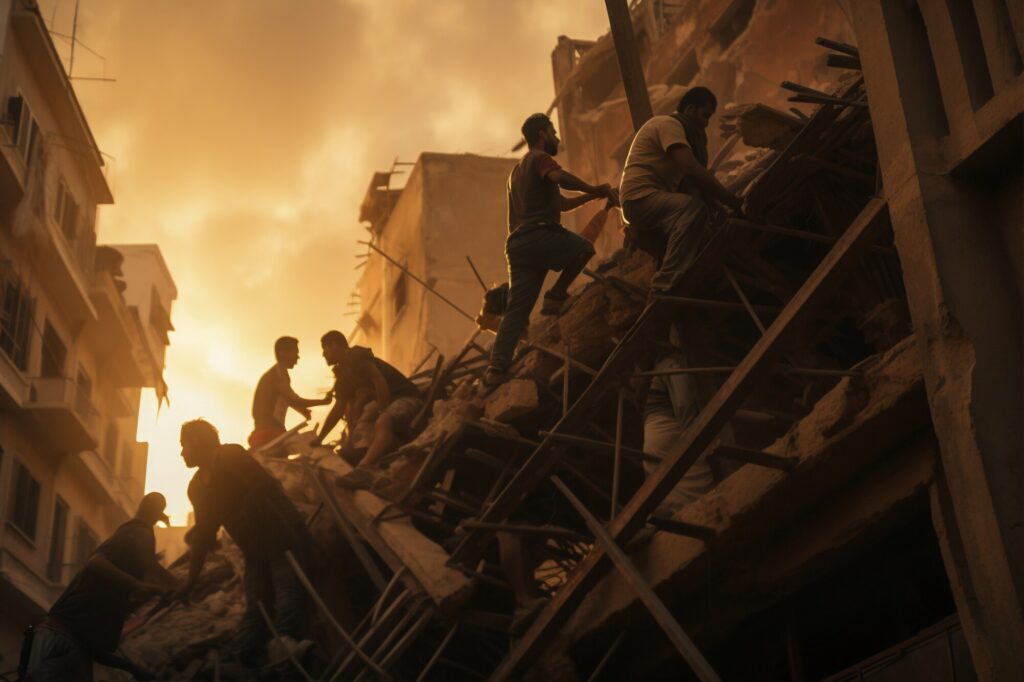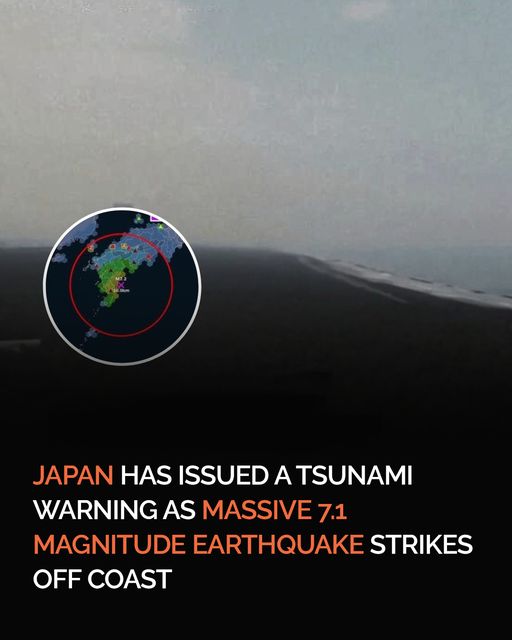A strong earthquake with a magnitude of 7.1 has rocked Japan, prompting tsunami warnings along the southern coast of the nation.
Shockwaves from the earthquake have shaken the area, triggering emergency procedures and apprehensions about the possibility of more seismic activity.
The Tsunami and Earthquake Warning
A large earthquake with a center in the Hyuganada Sea struck off the eastern coast of Kyushu, the southernmost island of Japan, on August 8, 2024, at about 4:42 PM local time.
The Japan Meteorological Agency later revised the magnitude of the earthquake from 6.9 to 7.1. Because the earthquake happened at a depth of roughly 18.6 miles (30 km), which is regarded as relatively shallow, the surface tremors were felt more powerfully.
A tsunami warning was issued in the wake of the earthquake, indicating waves as high as three feet (1 meter) along Kyushu’s southern shore and the adjacent island of Shikoku. Until the caution is withdrawn, the Japan Meteorological Agency advised locals to relocate to higher ground and avoid the beach.

Impact and Immediate Response
Significant shaking was felt throughout the area as a result of the earthquake; social media users have posted videos of retail malls and buildings trembling.
Local radio stations in Kirishima, Kyushu, claimed that staff members fled their studios amid severe shaking following the earthquake.
The Japan Meteorological Agency told the public that the waves were predicted to be small, even though a tsunami warning was in effect.
Residents were nevertheless cautioned to exercise caution, considering the unpredictability of aftershocks and possible subsequent earthquakes.
The Megaquake Alert
Only a few hours after the first tremor, Japan’s meteorological service made an unusual announcement regarding a potential “megaquake.”
According to the organization, there was a greater than normal possibility of a significant earthquake occurring close to the infamous subduction zone known as the Nankai Trough.
Based on seismic activity found close to the trough, this notice was issued. Such activity may result in an earthquake of magnitude 9.1, which would be comparable to the devastating Tohoku earthquake of 2011.
Prime Minister Fumio Kishida, in response to the heightened risk, canceled a planned visit to Kazakhstan, citing the need to remain in Japan and address the growing concerns of the population. “People would be feeling anxious,” Kishida remarked, acknowledging the fear that grips the nation whenever seismic activity intensifies.
Historical Context and Seismic Activity
With an average of 1,500 earthquakes each year, Japan is one of the world’s most seismically active nations, located in the Pacific Ring of Fire.
Although the nation has strict building regulations made to survive even the worst earthquakes, people nevertheless vividly recall previous tragedies, most notably the Tohoku earthquake and tsunami in 2011.
Over the ages, multiple megaquakes have occurred at the 560-mile (900-kilometer) subduction zone known as the Nankai Trough, off the southwest coast of Japan.
With a magnitude of 8.0, the last major earthquake to strike this area happened in 1946, killing nearly 1,300 people.
For many years, experts have cautioned that within the next few decades, the area could see another significant earthquake that could cause extensive destruction.
Ongoing Risk and Preparedness
Although there is no longer as much of a direct threat from a massive tsunami, there is still a chance of aftershocks and other seismic activity.
The Japan Meteorological Agency is advising residents in the affected areas to remain alert and be ready for any additional evacuation orders that might be necessary.
Following the most recent earthquake, the government of Japan established a special task force to keep an eye on the situation and plan emergency measures.
Even though there haven’t been any reports of serious injuries or damage, the situation is being continuously monitored because the aftershocks are still rattling the area.
Conclusion
The recent earthquake and tsunami warning in Japan have once again highlighted the country’s vulnerability to natural disasters.
The country is still on high alert as people prepare for more aftershocks and the threat of a megaquake.
Although the government and emergency services’ prompt action shows how prepared Japan is for situations like these, there is still apprehension about what might happen next.
